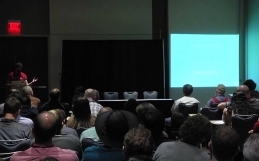“The Government is turning a blind eye to financial regulation and encouraging predatory lenders to help people that need a leg up until payday, and the shorter the period of lending, the more borrowers are able to be stung.” This is the parrallel drawn by London cabbie James Ambrose between the business model of San Francisco start up Uber and an unlikely u-turn by government on financial regulation. “It might be more convenient for some people but it doesn’t make it right, Silicon Valley are just exporting lawlessness”.
Whilst Mr.Ambrose’s comments may appear a tad emotional, this week over 30,000 taxi drivers across Europe are taking to the streets, they say, to demonstrate against Uber’s unashamed disregard for industry regulation which has apparently been concealed behind a baffling level of technology and elegant marketing, quickly turning it into a behemoth valued at $17bn, the origins of which many drivers would contest has been snatched away from the value of their own businesses unlawfully. The problem for licensed taxi drivers is that many Uber carriers are private and whilst they meet the Uber requirements for becoming a driver, they fall outside the licensing of some of their given jurisdictions yet continue to operate asserting fears that the traditional taxi market from Melbourne to Miami will be washed away along with the suspicions of the drivers.
[vimeo 58800109 w=500 h=263]
What makes Uber tick is it’s predictive model and the Surge Price Algorithm it has developed. By using visualisation from the Uber dataset the app is able to state how long it would take for a driver to pick you up and cover a certain distance whilst the Surge Price Algorithm, or dynamic pricing works out a price for a trip given a certain amount of supply and demand. GPS tracking also allows the app to display the whereabouts of every individual car is on the road.
Kevin Novak from Uber says that although Data Science is a difficult field to navigate, he talks about the notion of the ‘data hacker’ as the problems faced by Uber come from the fact that they are in a problem space which did not exist 5 years ago and they are approaching a fundamentally different concept to problems which have 20-30 years of data to rely upon. This relates to the elegant marketing and interface where Uber are very careful to be labelled a data driven company engineered by data scientists but take on a more holistic approach.
Novak gives an example of one of the early iterations of their Surge pricing screen which displays a pricing multiplier (e.g. 1.5x) which is dependent on supply and demand, a key piece of information which is hidden in a wall of text of the same size font. What they noticed is that as prices went up, more people wanted the product, a byproduct of consumers not paying attention to pricing. Once the surge screen was redesigned to communicate the price in large font, making it central to the whole display, demand decreased as prices went up. What this highlighted is the notion of the data hacker who builds a product rather than just a model, Novak says, ‘an incredibly well written model that’s making all the right recommendations wrapped in a terrible product is indeed a terrible model’.
As long as the data and platform continues to deliver the magic of Uber and once regulatory issues have been resolved, ‘traditional’ taxi drivers could also benefit from using the app which manipulates real time pricing and would serve to improve their occupancy rates and reduce wait times for the next ride.


